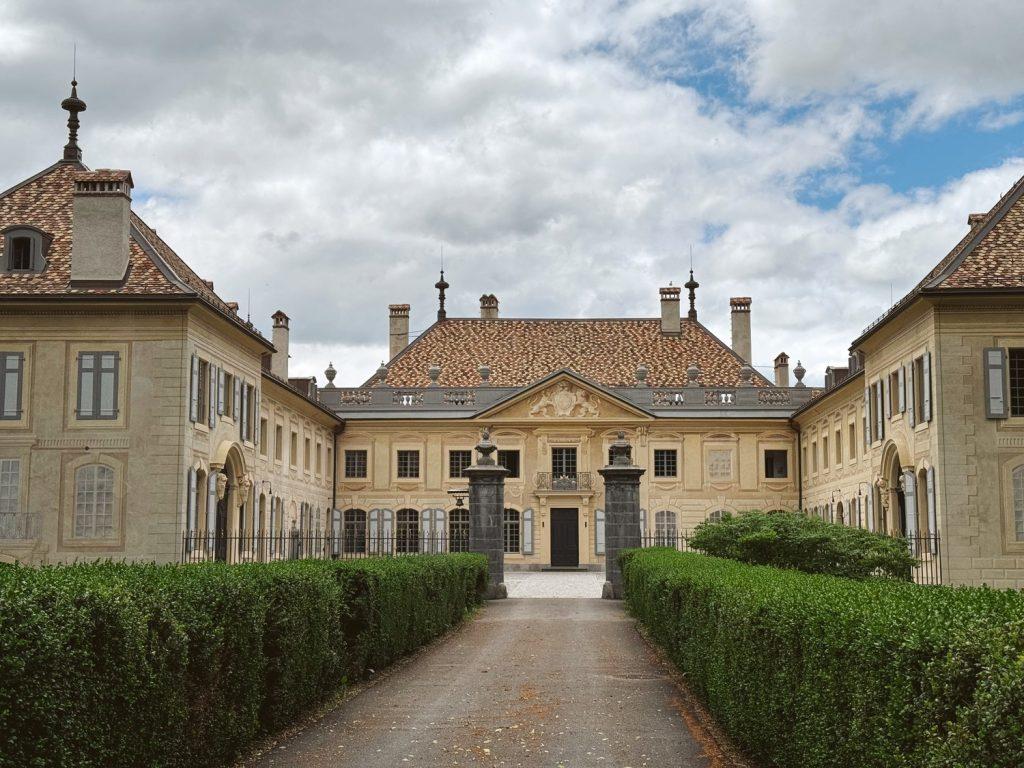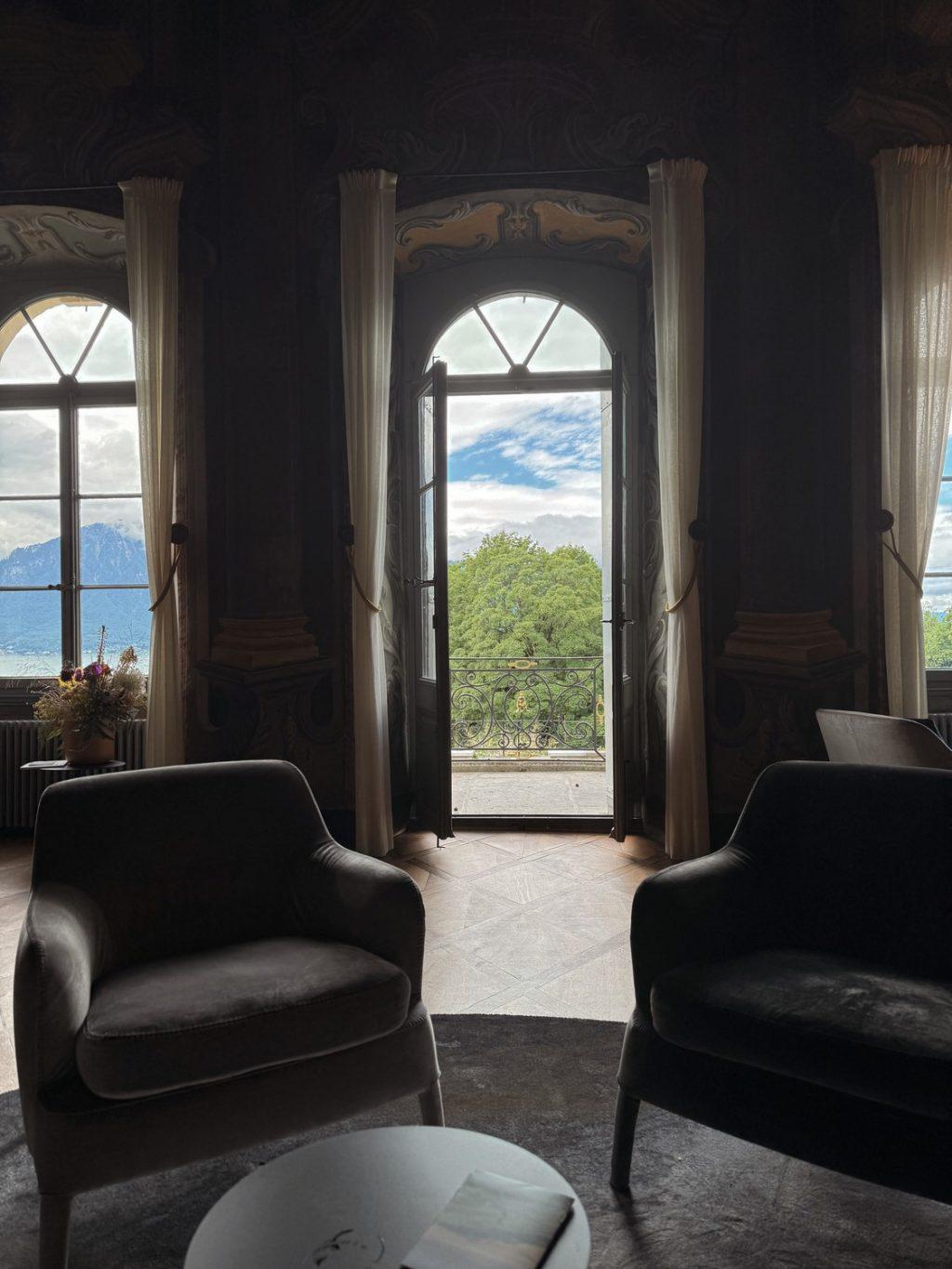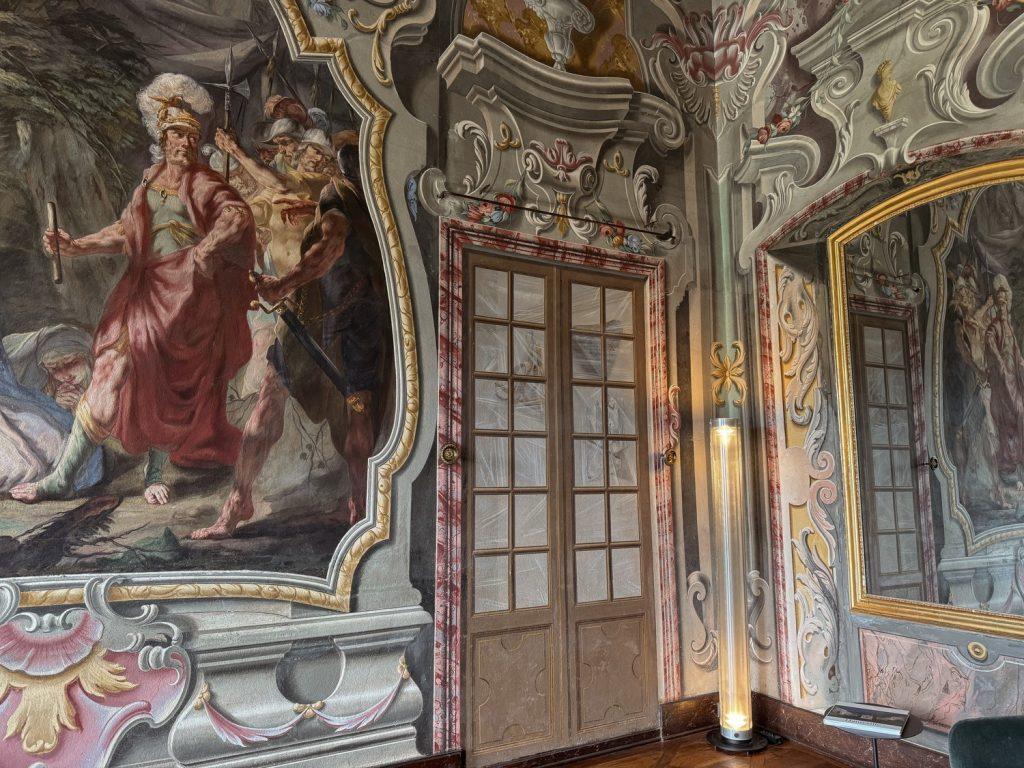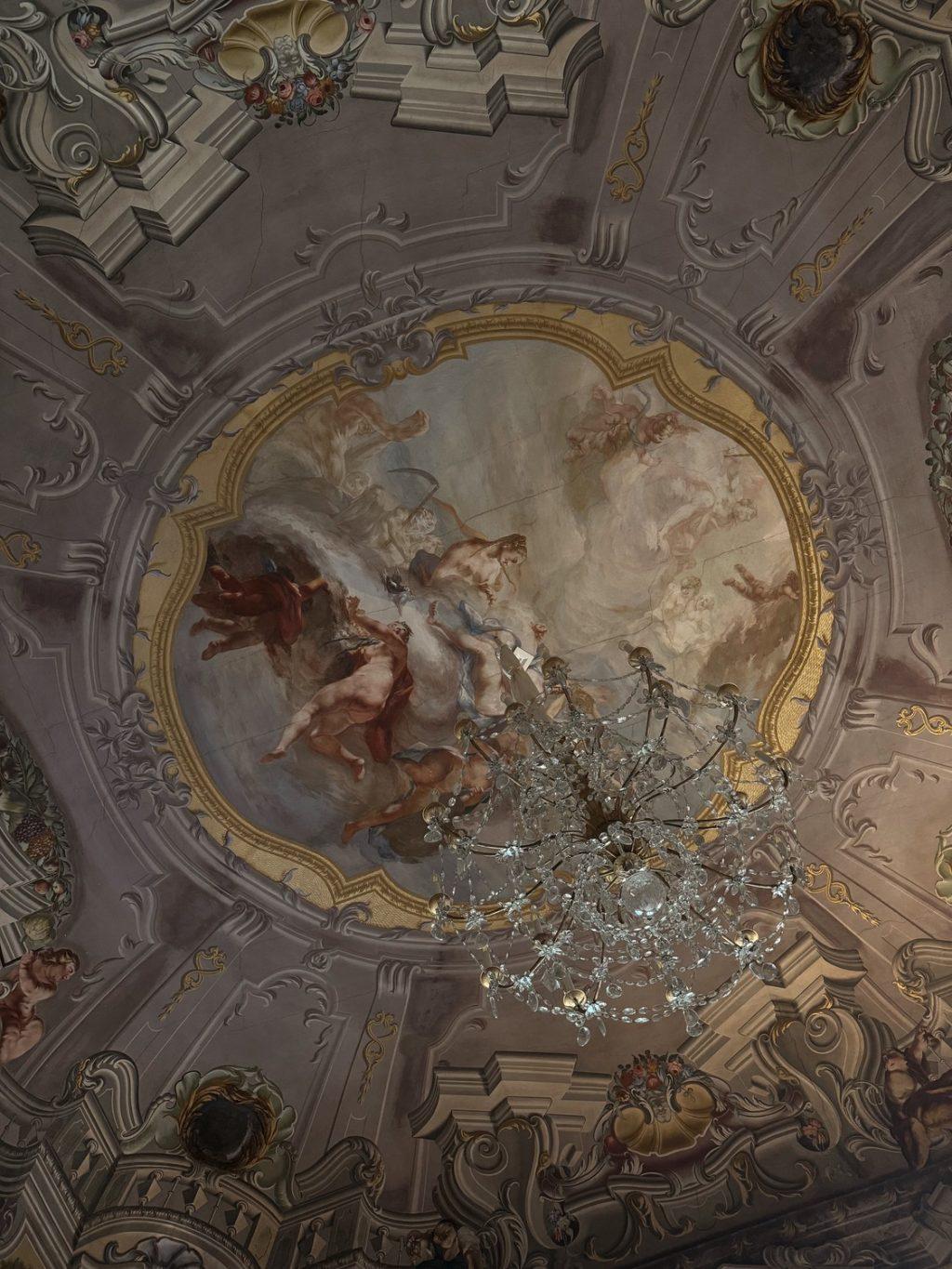
Pepperdine University purchased the Château d’Hauteville in November 2019, and began welcoming study abroad students in the Switzerland study abroad program in September 2023. Take a look inside the history of the château and the recent renovations.
Upholding the integrity of the 1734 château has been no easy task, since it is a Class 1 Historic Monument, but Pepperdine has embraced this challenge.
“Preservation isn’t always just keeping something exactly the way it was,” Switzerland Program Director Ezra Plank said. “Sometimes it’s preserving its historical integrity while still modernizing certain elements.”
Plank began as the Switzerland program director in 2014 at the Lausanne campus, he said. He has seen the Château d’Hauteville campus transformation from the start to near finish.

Inside the History of the Château d’Hauteville
The Grand d’Hauteville family owned the property for over 260 years, Plank said. They purchased the château in 1760, from Jacques-Philippe d’Herwarth who acquired it in 1734, Plank said. The Grand D’Hautevilles were business owners from Lyon, France looking for a summer home, Plank said.
This purchase was significant since it came with a title of baron that would be passed on to the patriarch of the family and was passed down to the preceding generations, Plank said. Essentially, they bought their way into nobility.
Renovations began almost immediately following the purchase. The château’s core consisted of the Grand Salon. Visitors may recognize this as the decorated fresco seating room. The family hired the Switzerland king’s architect from Paris, François II Franque, to expand the château, Plank said.

A mill to grind grain, expanded vineyards, greenhouse, pavilion and fountains were a few of the elements added by the family, Plank said.
“They developed it as a proper estate in that way,” Plank said.
Pepperdine’s Search for a New Property
In 2014, inspections of the Lausanne campus uncovered problematic concerns requiring immediate repair, Plank said.
“The question was proposed, ‘how will this facility function for the next 10 years, 20 years, 50 years?’” Plank said.
Plank and his fellow colleagues, Mark Barneche, Ben Veenendaal and Karine Grivet began searching for a new campus property, Plank said. They worked with local realtors and walked through 40 different properties, Plank said.
Finally, in 2016, Plank and his colleagues were in Vevey looking at properties when they saw a listing for the chateau. At this point, the château had been on the market for over a year and a half, Plank said.
An auction had just been held by the surviving family members where all of the contents of the household were auctioned off, Plank said. The auction served as the first time the doors of the château were opened to the public, attracting many spectators, Plank said.
“So it’s really kind of this important occasion,” Plank said.
The First Viewing
Plank and his team requested a tour of the château from local realtors. Everything was closed up when they arrived on site, Plank said.
“Everything was shuttered and so it took about an hour to open up all the doors, unlock everything, open the shutters so we could walk through,” Plank said.
At first glance, the amount of work needed to turn the château into an operational property was overwhelming, Plank said.
The last family member to live in the château was in 2014, Plank said. The water system, electrical system and heating systems were just a few top of mind projects during the first tour.
Plank and his team began doing research, working with an architect and the realtor of the property. Their findings were all passed down to Gary Hanson, the senior executive vice president of Pepperdine, Plank said. The project was then submitted to Andrew Benton, president of Pepperdine 2000-2019, who traveled to Switzerland to assess the property, Plank said.
In 2019, Hanson entered into 11 months of negotiations with the family, until a purchase agreement was signed that November, Plank said.
Renovations Begin
Following the purchase agreement, Pepperdine hired architect Nicholas Delachaux from the architectural firm Glatz & Delachaux to began renovations on the château, Plank said.
The laborious task of scaffolding the château began, taking several months to complete, requiring a scaffolded roof, Plank said.
“We needed to make sure once we pulled off the tile and the roof and exposed it that no rain could damage the château,” Plank said.
The Château d’Hauteville is a Class 1 Historic Monument, Plank said. This title has required the University to include preservation specialists while staying within certain regulations.
Plank spoke of the legacy Hanson has created while working on the château project.
“He managed it in a way with the architects, with the federal authorities, with the state authorities, with the local and municipal authorities making sure that the project continues to move forward, and that the university could be as responsible as possible with it’s budget,” Plank said.
Inside the Château Modern Sustainability
The château was renovated with sustainability in mind to hold a modern university, Plank said.
The previous heating system burned oil. The new heating system burns wood chips, with 10% of the wood chips coming from the château’s forest and the rest coming from the surrounding forests, Plank said.
“There’s very little emissions and very little waste, period,” Plank said.
This heating system is used for all of the water in the orangery, château, garden house and the gate house, Plank said.
The château has its own water management system that displaces water from heavy rain and reintegrates it into the soil through creeks, Plank said. Any leftover water not infiltrated into the creeks finds its way into a collection pond and rotates into the ground, Plank said.
Maintaining the History
Two historical significant murals that date back to the 1730s live in the Grand Salon and above the Grand Staircase painted by the Ticino artist named Giuseppe Antonio Petrini, in 1704-1736/1737, Plank said. It’s believed his son Marco was also a collaborator.

During the renovation, all that was done to return the paintings back to their original beauty was clean them with water, no chemicals of any sort were used, Plank said.
“The goal was to basically take off the dust, the soot from the past, because they would have used candles in the Grand Salon,” Plank said.
The château’s original chandelier was auctioned off in 2014, Plank said. Finding a replacement was no easy task.
“We didn’t want a new chandelier that faked old,” Plank said.
Pepperdine purchased three period piece chandeliers from an antique store in Rome that have been rewired, Plank said.
One was placed in the Grand Salon, one hangs in the billiard room and the third in a classroom next to the Grand Salon.

Phase II – East Side Renovation
Phase I of the renovation process of the Château d’Hauteville finished in July 2023, and renovations for Phase II began in August 2023, Marc Goodman, Hauteville’s vice chancellor, said.
The East Side Project consists of three elements: the garden house, the glass house and the swimming pool renovation, Goodman said.
The garden house will hold bread and pizza ovens, graduate program single occupancy rooms and apartments, Goodman said.
The two-level glass house will hold the first laboratory for the natural science division outside of Malibu, Goodman said. The upper level will hold classrooms and the lab surrounded by three glass windows overlooking Lake Geneva, Goodman said. Various receptions will also be held in the glass house.
June 6 marked an important date for the East Side renovation with the Garden House and Glass House reaching substantial completion, Goodman said. Occupancy is anticipated this summer, Goodman said. A Swiss tradition celebrates workers who have contributed to the construction and renovation with a special celebration.
“That’s an opportunity to say “thank you” for all your hard and good work,” Goodman said.
____________________
Follow the Graphic on X: @PeppGraphic
Contact Rachel Flynn via email: rachel.flynn@pepperdine.edu
